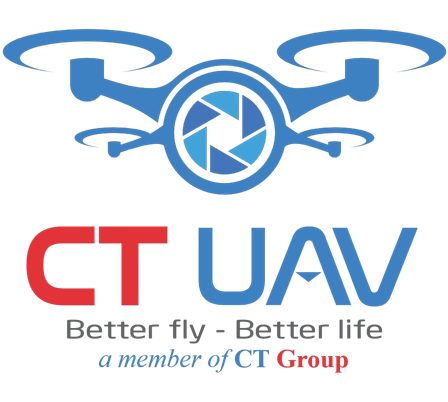“Unique,” “Innovative,” “First-of-its-kind,” and “Symbolic of the future” are just some of the descriptors being used to characterize the unmanned aerial vehicles (UAVs) showcased at the Vietnam International Defense Exhibition 2024, rendering them a focal point of public attention.
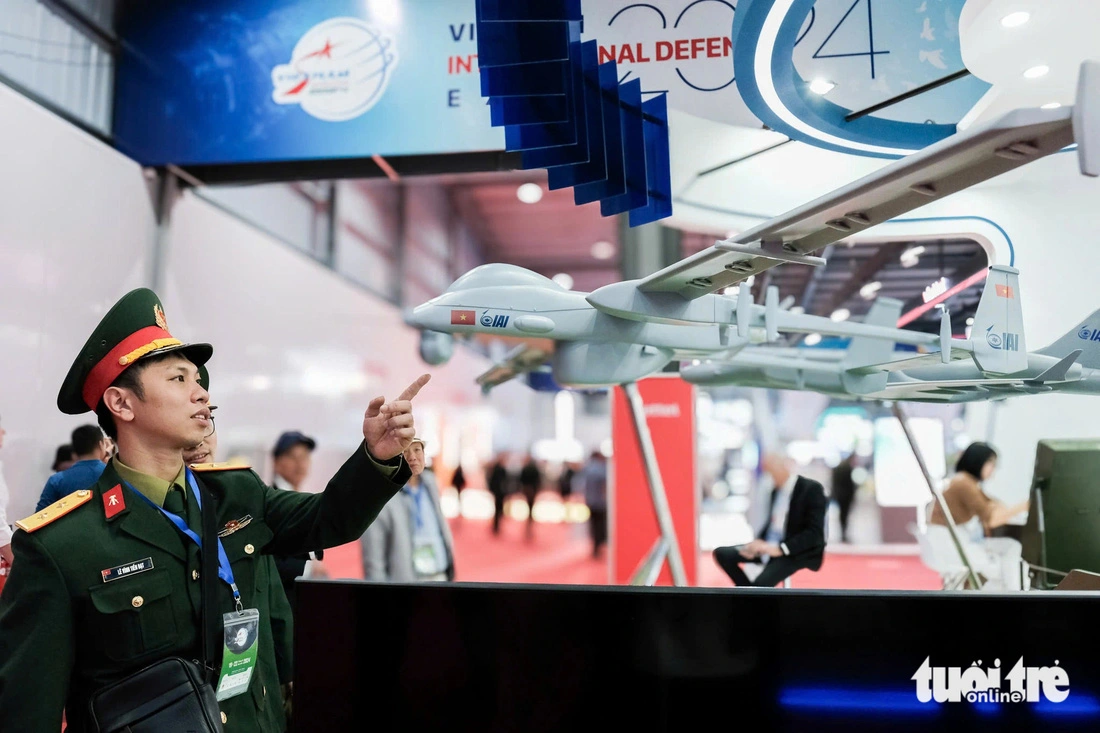
The Israel Aerospace Industries (IAI) booth prominently featured the HERON MK II, an advanced medium-altitude, long-endurance (MALE) unmanned aerial vehicle (UAV) engineered for both strategic and tactical operations. This state-of-the-art UAV boasts an operational ceiling exceeding 10,000 meters, a top speed of approximately 250 km/h, a maximum takeoff weight of roughly 1,400 kg, and an operational range spanning 250 to 1,000 kilometers, contingent on mission parameters. – Photo: HÀ QUÂN.
The increasing versatility of unmanned vehicles (UVs) in recent years has turned them into one of the highlights at the Vietnam International Defense Exhibition 2024 in Hanoi.
By 4:30 PM on December 20, many attendees hurriedly visited the exhibition booths showcasing defense products, as only 30 minutes remained before the second day of the event concluded.
The lively atmosphere at the UAV booths was amplified by discussions and question-and-answer exchanges, reflecting the growing interest and excitement surrounding these advanced aerial platforms.
Unveiling Military UAVs for the First Time
Upon passing through security checkpoints and walking a short distance, visitors were immediately met with the rare opportunity to witness advanced military assets—previously seen only on television—now displayed prominently on the Gia Lâm Airport runway.
Within the defense product exhibition area, given the substantial size of many systems and the spatial constraints of the booths, numerous companies employed scaled-down models and multimedia presentations to provide a detailed and immersive understanding of their products’ capabilities.
The Viettel booth made a lasting impression at the entrance of Hall A, presenting two dynamic conceptual illustrations envisioning the equipment of the soldier of the future.
The High-Tech Industry Corporation under Viettel Group captivated both domestic and international audiences with the debut of a range of cutting-edge unmanned aerial vehicles (UAVs).
These UAVs, independently developed and manufactured in Vietnam by Viettel, were specifically designed for diverse operational scenarios, including reconnaissance, loitering munitions, and multi-purpose missions, leaving a strong impression on attendees.
Among the showcased innovations, the VUA-SC-3G UAV is specifically engineered for reconnaissance and target designation across both land and sea environments. Likewise, the VU-R70, a lightweight medium-range reconnaissance UAV, features advanced autonomous systems for target detection, identification, and precision designation, enabling seamless integration with firepower units.
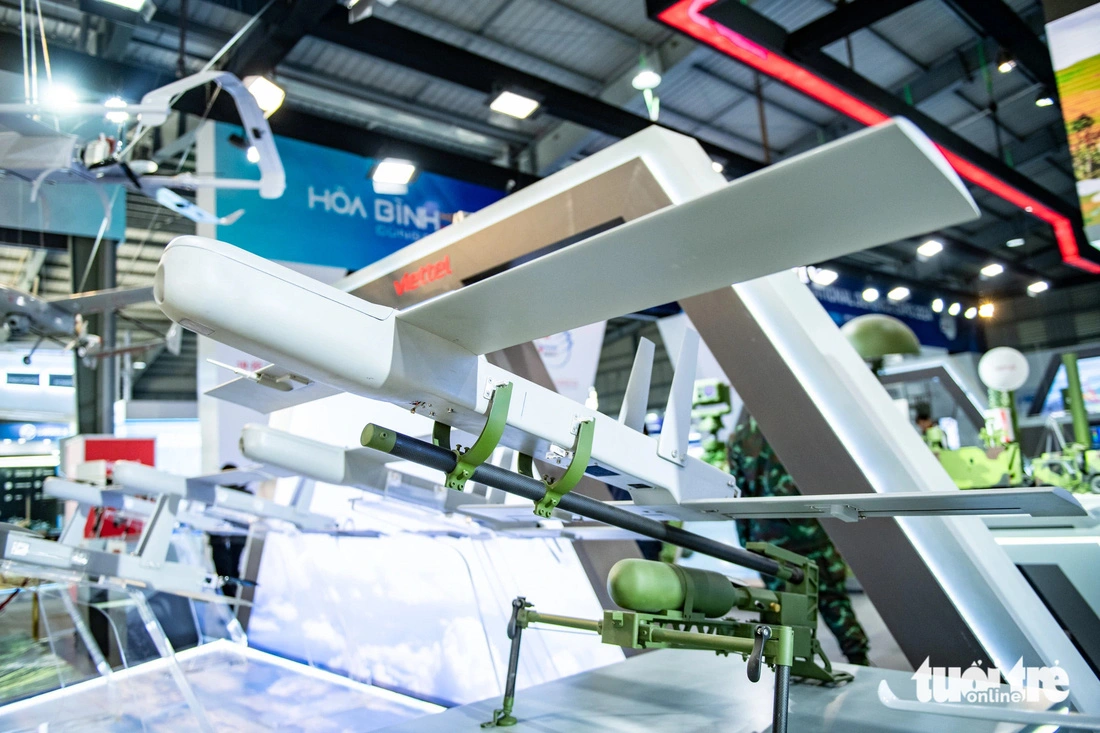
The VU-C2 loitering munition UAV, designed for precision strikes on battlefield targets, garnered significant attention. Equipped with a warhead and an electro-optical seeker integrated with artificial intelligence, the VU-C2 is capable of fully autonomous target search, detection, locking, and engaging under command authorization. With a maximum takeoff weight of 8 kg, it boasts a continuous operational time of 40 minutes and a top attack speed exceeding 130 km/h. – Photo: NAM TRẦN
International exhibitors from the United States, Iran, Russia, Turkey, and Israel also drew considerable interest in the military UAV display area.
At the booth of Israel Aerospace Industries (IAI), the medium-range HERON MK II UAV attracted significant attention. Designed for strategic and tactical missions, the HERON MK II excels in intelligence gathering, maritime patrol, and target surveillance.
Meanwhile, Iran prominently featured its combat and reconnaissance UAVs, which occupied a substantial portion of its exhibition space. A representative from Iran’s Ministry of Defense emphasized that UAV technology, alongside aviation and maritime industries, represents a key area of potential collaboration between Iran and Vietnam.
Civilian UAVs: A Vision of the Future
The rapid evolution of unmanned vehicles (UVs) has heralded a transformative era, underpinned by state-of-the-art technologies such as artificial intelligence (AI) integration. These advancements are poised to revolutionize pivotal industries, including defense, transportation, and agriculture, fundamentally reshaping their developmental trajectories.
By 2024, the global UV market attained an impressive valuation of $38.6 billion, with projections estimating a surge to $58 billion by 2027. This unprecedented growth has intensified the race for technological supremacy, cementing UVs as a linchpin of industrial innovation and economic transformation in the foreseeable future.
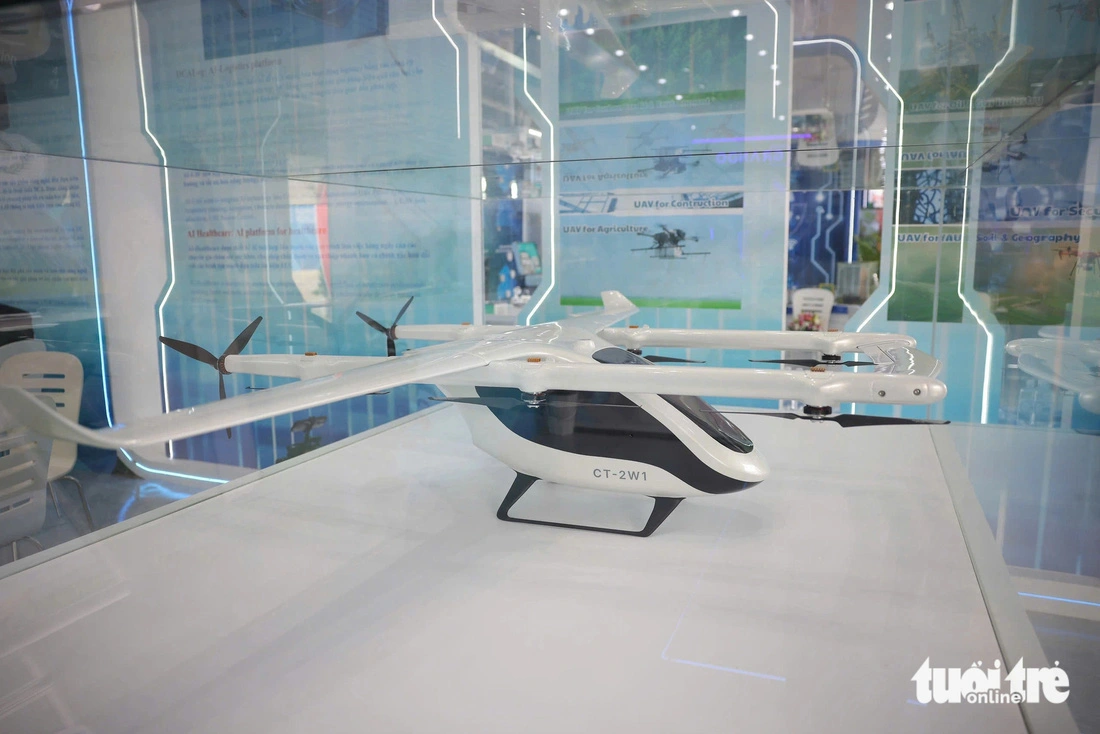
Adjacent to the military UAV and defense equipment area, the civilian product exhibition drew a constant stream of visitors over its first two days.
CT UAV, a subsidiary of CT Group, introduced a 1:6 scale model of its prototype electric passenger UAV, the CT-2W1. According to CT UAV representatives, the first prototype is scheduled for unveiling in mid-2025, with mass production planned for December of the same year. The CT-2W1 is designed to achieve a top speed of 200 km/h, carry up to five passengers, and sustain continuous flight for up to two hours.
The development of the CT-2W1 posed significant challenges, as CT UAV is a pioneer in this emerging field in Vietnam. Nevertheless, the company aims to revolutionize urban transportation and tourism not only in Vietnam but across Southeast Asia through its groundbreaking passenger UAV technologies.
Another standout innovation was the Hera UAV, a product of Vietnamese ingenuity that has garnered international acclaim. Featured in both the defense and civilian product sections, the Hera UAV underscores its versatility and dual-use potential.
The Ministry of Public Security’s exhibition booth also unveiled several new technologies, including the DJH09, a mobile drone/flycam suppression device, and UAVs equipped with advanced software for data collection and security management.
The exhibition highlighted the broader “family” of unmanned vehicles (UVs), encompassing UAVs (unmanned aerial vehicles), UGVs (unmanned ground vehicles), USVs (unmanned surface vehicles), and UUVs (unmanned underwater vehicles). Unfortunately, USVs and UUVs were notably absent from this year’s event.
The inclusion of these unmanned surface and underwater vehicles in the third iteration of the exhibition would carry significant importance for a maritime nation like Vietnam, with its extensive coastline and strategic maritime interests.
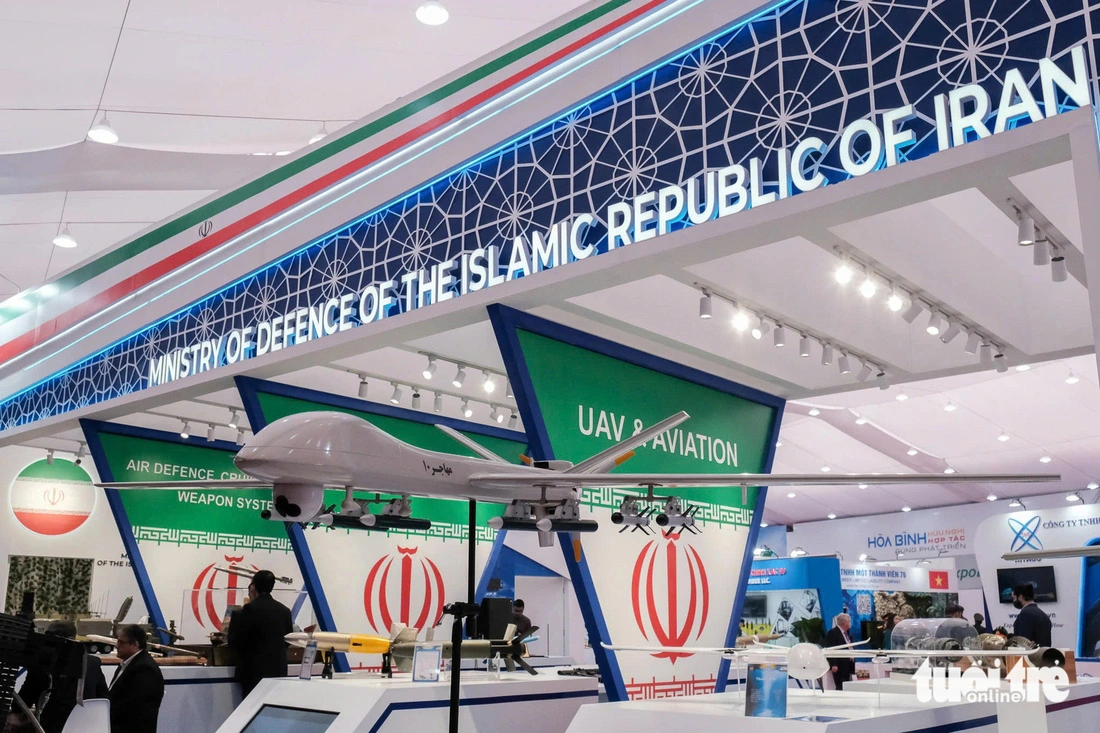
The booth of the Iranian Ministry of Defense showcased a wide array of advanced UAV models, capable of integrating cruise missiles and achieving high speeds, reflecting the country’s significant expertise in military technology. – Photo: HÀ QUÂN.
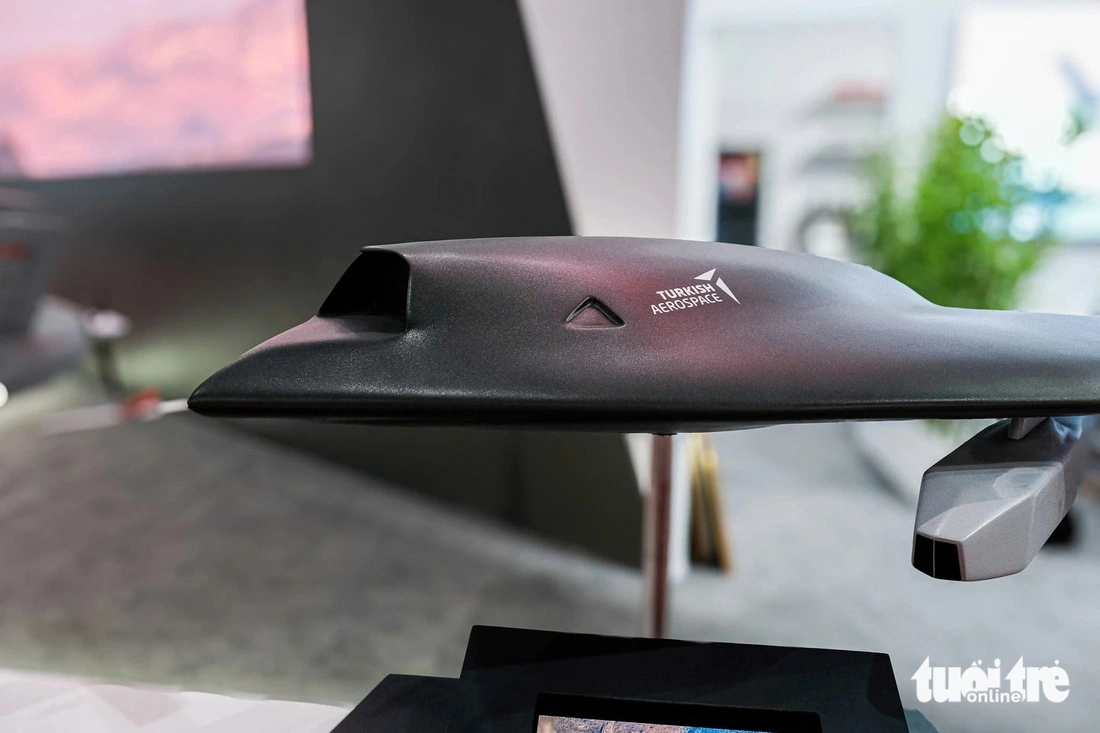
Within the exhibition area, the Turkish Aerospace booth drew significant attention from delegates. The display impressed visitors with its array of helicopters and a striking scaled model of a stealth UAV, closely resembling the iconic B-2 Spirit, the multi-billion-dollar “Stealth Bomber” of the U.S. Air Force. According to the manufacturer, this UAV is engineered with advanced radar-evading technology and excels in airstrike missions, specifically designed to suppress and destroy enemy air defense systems. The full-scale UAV boasts remarkable specifications, including a length of 7.5 meters, a wingspan of 12.5 meters, a height of 2.5 meters, and a maximum takeoff weight of 6.5 tons. – Photo: HÀ QUÂN.
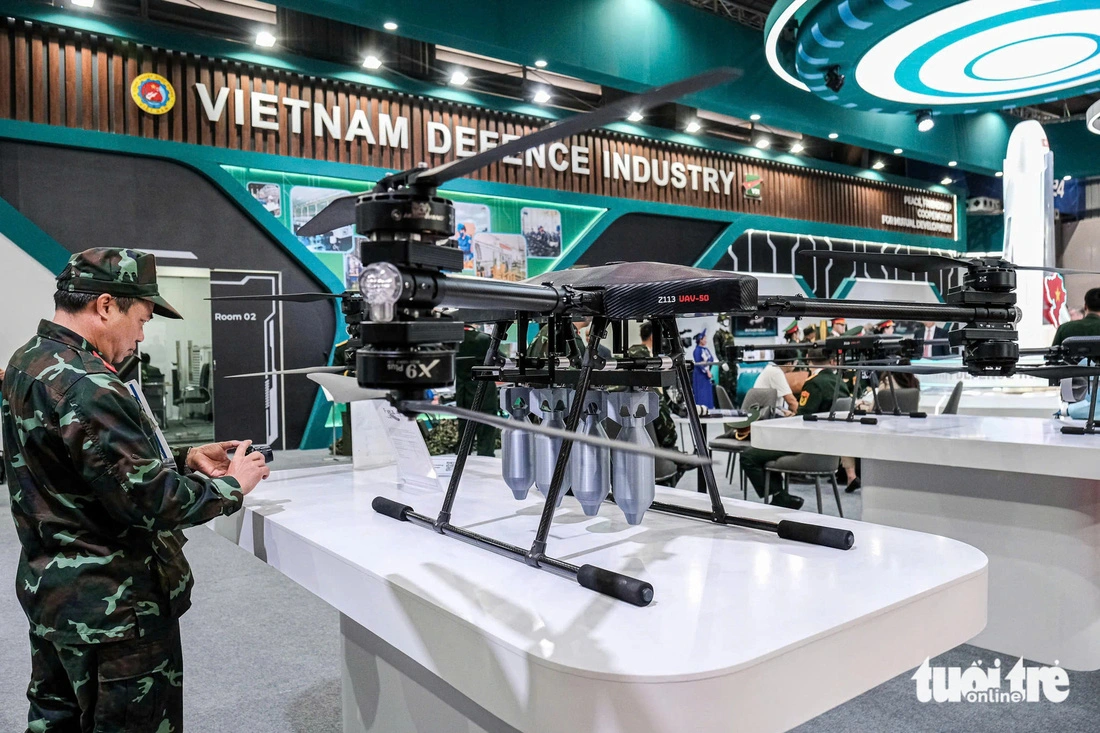
Attendees exploring the exhibition booth featuring cutting-edge innovations from Vietnam’s defense industry. – Photo: HÀ QUÂN.
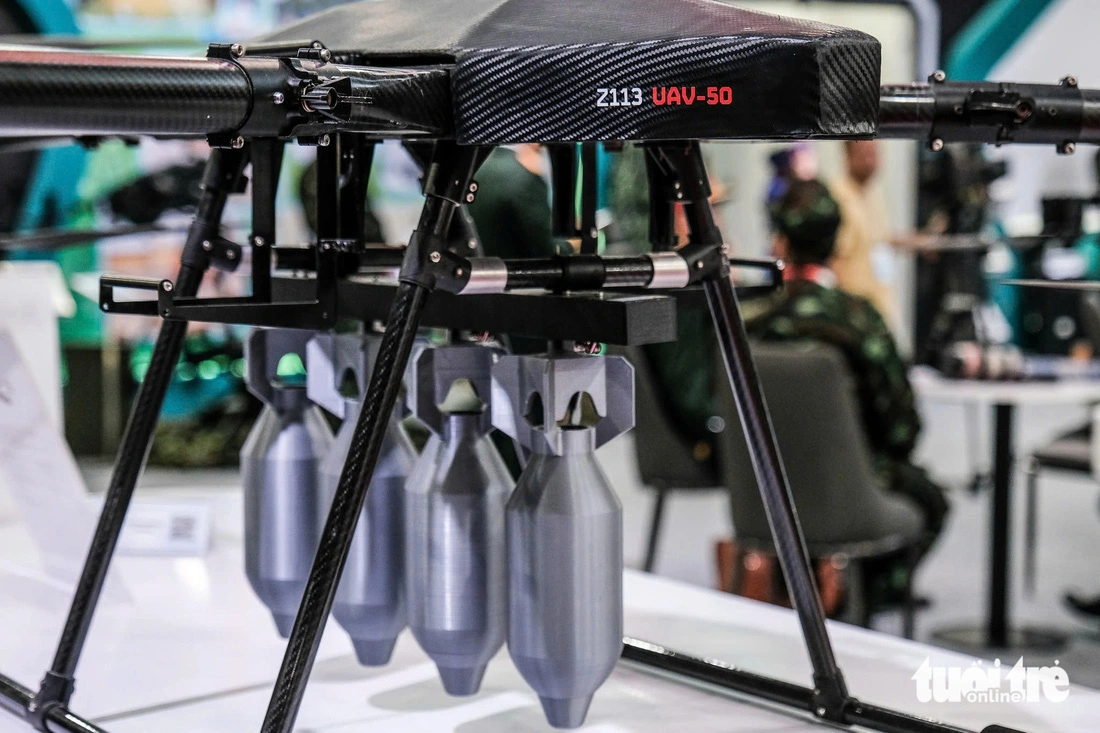
The UAV-50, designed by Z113 Factory, is capable of deploying artillery shells onto targets, significantly enhancing precision in combat operations. – Photo: HÀ QUÂN.
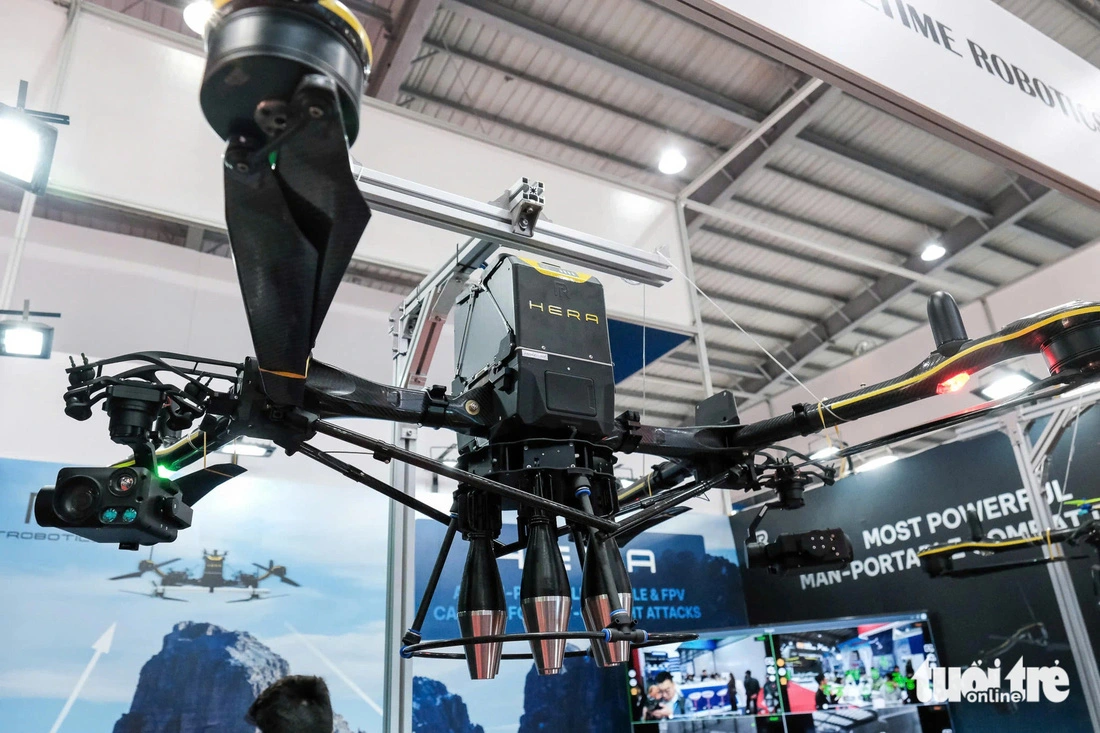
The Hera drone exemplifies exceptional adaptability, capable of performing a multitude of functions across diverse sectors, including geospatial surveying, national defense and security, agriculture, and, most notably, search and rescue operations. – Photo: HÀ QUÂN.
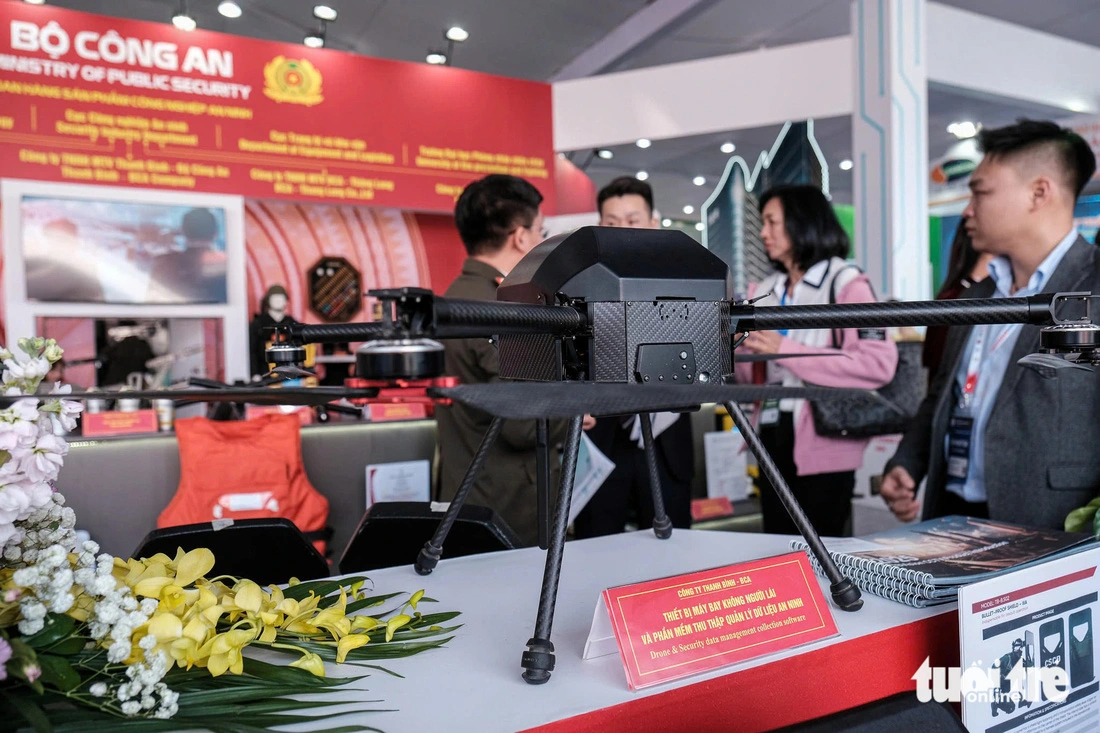
The Ministry of Public Security’s exhibition booth featured a state-of-the-art drone equipped with advanced software for the collection and management of security data. – Photo: HÀ QUÂN.
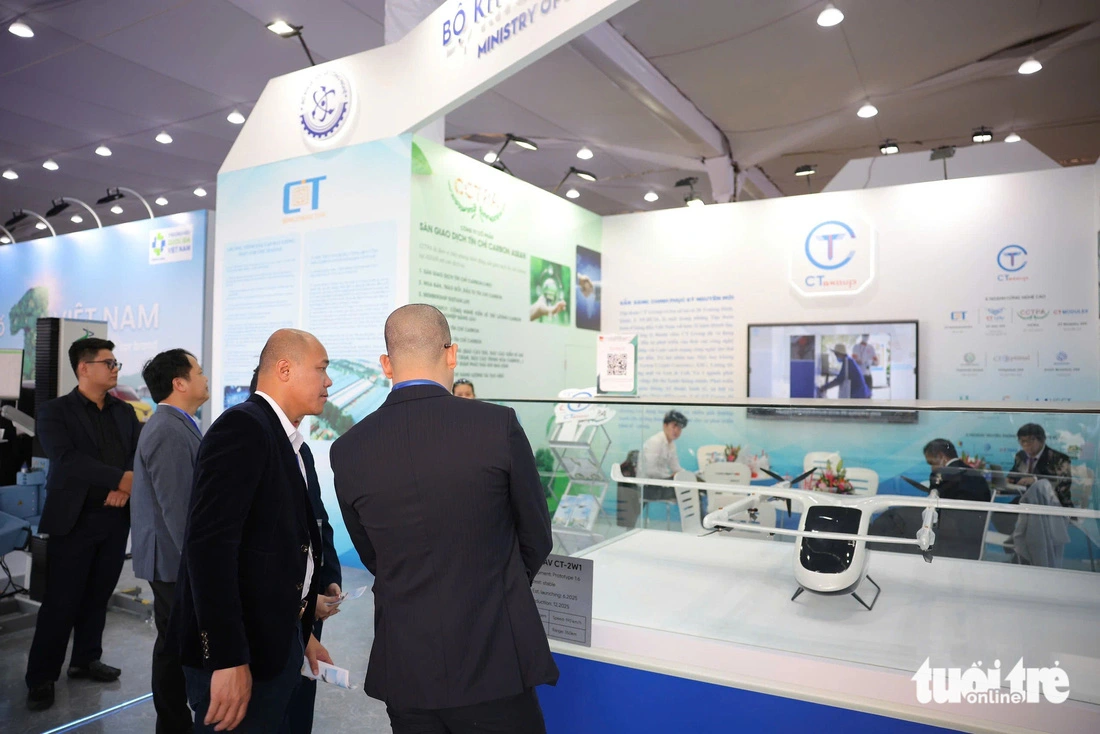
Attendees delve into the advanced design and capabilities of the CT-2W1, a pioneering innovation developed by CT UAV, a subsidiary of CT Group. – Photo: DUY LINH.

